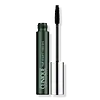What's inside
What's inside
 Key Ingredients
Key Ingredients

 Benefits
Benefits

 Concerns
Concerns

 Ingredients Side-by-side
Ingredients Side-by-side

Isododecane
EmollientCera Alba
EmollientBeeswax
Emulsion StabilisingCopernicia Cerifera Cera
EmollientCopernicia Cerifera Wax
Disteardimonium Hectorite
StabilisingWater
Skin ConditioningAllyl Stearate
Oryza Sativa Cera
Skin ConditioningHydrogenated Rice Bran Wax
Skin ConditioningPolyvinyl Laurate
Ethylene/Propylene Copolymer
AbrasiveHydrogenated Castor Oil/Dimer Dilinoleic Acid Copolymer
CI 77491
Cosmetic ColorantCI 77492
Cosmetic ColorantCI 77499
Cosmetic ColorantIron Oxides
CI 77007
Cosmetic ColorantUltramarines
CI 77891
Cosmetic ColorantTitanium Dioxide
Cosmetic ColorantCI 75470
Cosmetic ColorantCI 77288
Cosmetic ColorantChromium Oxide Greens
CI 77742
Cosmetic ColorantCI 77510
Cosmetic ColorantIsododecane, Cera Alba, Beeswax, Copernicia Cerifera Cera, Copernicia Cerifera Wax, Disteardimonium Hectorite, Water, Allyl Stearate, Oryza Sativa Cera, Hydrogenated Rice Bran Wax, Polyvinyl Laurate, Ethylene/Propylene Copolymer, Hydrogenated Castor Oil/Dimer Dilinoleic Acid Copolymer, CI 77491, CI 77492, CI 77499, Iron Oxides, CI 77007, Ultramarines, CI 77891, Titanium Dioxide, CI 75470, CI 77288, Chromium Oxide Greens, CI 77742, CI 77510
Water
Skin ConditioningCopernicia Cerifera Wax
Stearic Acid
CleansingGlyceryl Stearate
EmollientPolyisobutene
Silica
AbrasiveAcrylates Copolymer
Aminomethyl Propanediol
BufferingVp/Eicosene Copolymer
Sodium Hyaluronate
HumectantLauroyl Lysine
Skin ConditioningPantethine
EmollientMelanin
Skin ProtectingPanthenol
Skin ConditioningEthylhexylglycerin
Skin ConditioningHydroxyethylcellulose
Emulsion StabilisingCalcium Aluminum Borosilicate
Pvp
Emulsion StabilisingAcacia Senegal Gum
MaskingIsostearic Acid
CleansingSimethicone
EmollientDimethicone PEG-8 Polyacrylate
Urea
BufferingGlycerin
HumectantPentaerythrityl Tetra-Di-T-Butyl Hydroxyhydrocinnamate
AntioxidantSodium Lauryl Sulfate
CleansingPEG-8 Dimethicone
EmulsifyingDisodium EDTA
Sorbic Acid
PreservativeChlorphenesin
AntimicrobialSodium Dehydroacetate
PreservativePhenoxyethanol
PreservativeMica
Cosmetic ColorantCI 77491
Cosmetic ColorantCI 77492
Cosmetic ColorantCI 77499
Cosmetic ColorantCI 77400
Cosmetic ColorantCI 42090
Cosmetic ColorantCI 77891
Cosmetic ColorantCI 19140
Cosmetic ColorantCI 77288
Cosmetic ColorantCI 77289
Cosmetic ColorantCI 75470
Cosmetic ColorantCI 77163
Cosmetic ColorantCI 77007
Cosmetic ColorantCI 77000
Cosmetic ColorantWater, Copernicia Cerifera Wax, Stearic Acid, Glyceryl Stearate, Polyisobutene, Silica, Acrylates Copolymer, Aminomethyl Propanediol, Vp/Eicosene Copolymer, Sodium Hyaluronate, Lauroyl Lysine, Pantethine, Melanin, Panthenol, Ethylhexylglycerin, Hydroxyethylcellulose, Calcium Aluminum Borosilicate, Pvp, Acacia Senegal Gum, Isostearic Acid, Simethicone, Dimethicone PEG-8 Polyacrylate, Urea, Glycerin, Pentaerythrityl Tetra-Di-T-Butyl Hydroxyhydrocinnamate, Sodium Lauryl Sulfate, PEG-8 Dimethicone, Disodium EDTA, Sorbic Acid, Chlorphenesin, Sodium Dehydroacetate, Phenoxyethanol, Mica, CI 77491, CI 77492, CI 77499, CI 77400, CI 42090, CI 77891, CI 19140, CI 77288, CI 77289, CI 75470, CI 77163, CI 77007, CI 77000
Ingredients Explained
These ingredients are found in both products.
Ingredients higher up in an ingredient list are typically present in a larger amount.
Ci 75470 is a bright-red pigment. It is AKA carmine.
Carmine is derived from insects such as the cochineal beetle. This ingredient has been used as a natural dye for over 2000 years.
This pigment is called Ultramarine blue lazurite. It gives a saturated blue color, but can be used to create other colors as well.
According to the manufacturer, it is usually made from kaolin, sodium sulfate, sodium carbonate, sulfur, and charcoal.
Ci 77288 is used to add green pigment to products.
Ci 77491 is also hydrated iron III oxide. It's sole purpose is to give a red/pink hue to products.
Iron III oxides are classified as inorganic chemicals for coloring.
Synthetically created Ci 77491 is considered safer than those naturally found. This is because the synthetically created version may contain less impurities. Iron oxides are generally non-toxic and non-allergenic.
Learn more about CI 77491Ci 77492 is also hydrated iron III oxide. It's sole purpose is to give a yellow hue to products.
Iron III oxides are classified as inorganic chemicals for coloring.
Synthetically created Ci 77492 is considered safer than those naturally found. This is because the synthetically created version may contain less impurities. Iron oxides are generally non-toxic and non-allergenic.
Learn more about CI 77492Ci 77499 is also hydrated iron III oxide. It is created from mixing red and black iron oxides. This helps give shades of darkness to a product.
Iron III oxides are classified as inorganic chemicals for coloring.
Ci 77891 is a white pigment from Titanium dioxide. It is naturally found in minerals such as rutile and ilmenite.
It's main function is to add a white color to cosmetics. It can also be mixed with other colors to create different shades.
Ci 77891 is commonly found in sunscreens due to its ability to block UV rays.
Learn more about CI 77891Copernicia Cerifera Wax comes from a palm tree native to Brazil; another name for this ingredient is Carnauba Wax.
This ingredient is used to thicken texture and also leaves behind a film when applied.
Fun fact: This wax has the highest melting point of all natural waxes and low solubility.
Learn more about Copernicia Cerifera WaxWater. It's the most common cosmetic ingredient of all. You'll usually see it at the top of ingredient lists, meaning that it makes up the largest part of the product.
So why is it so popular? Water most often acts as a solvent - this means that it helps dissolve other ingredients into the formulation.
You'll also recognize water as that liquid we all need to stay alive. If you see this, drink a glass of water. Stay hydrated!
Learn more about Water